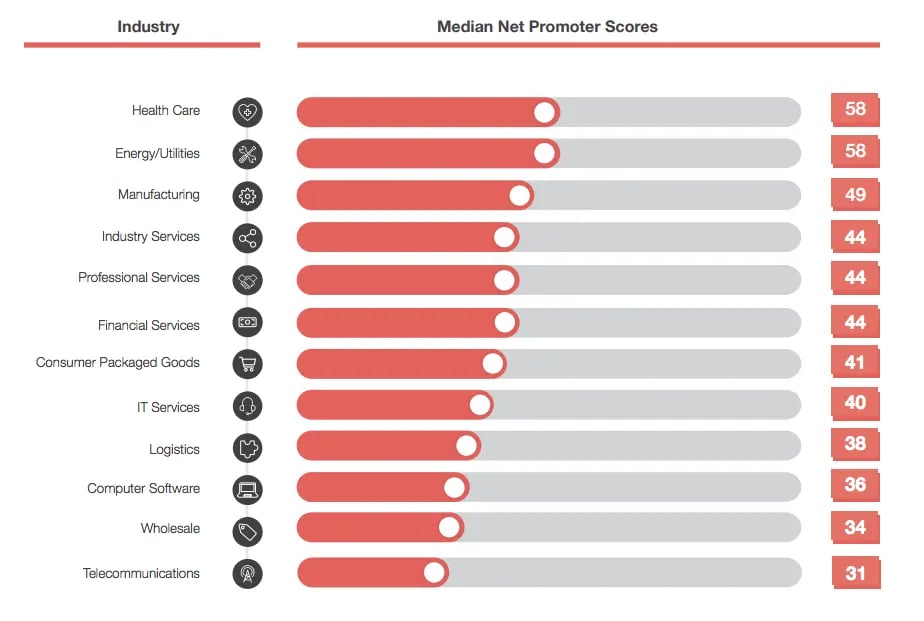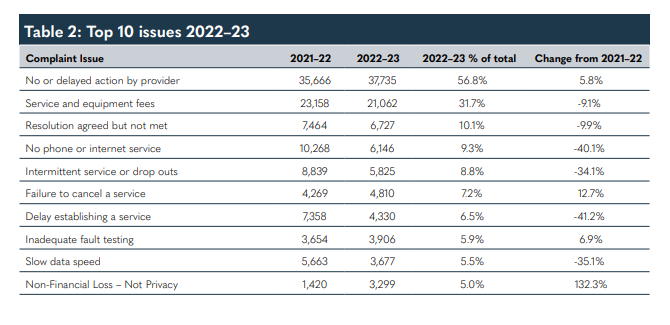What happens to telecom when automation and AI come calling?
Share at:

I recently had the opportunity to attend Mobile World Congress (MWC) in Barcelona. MWC is a truly massive gathering, attracting over 100,000 attendees and 2,500 exhibitors from around the world. As such, it’s a great place to check out the collective mood of the industry and the most promising and enticing areas of focus.
This was my second year attending this event—and I must say, this year was far more energizing and uplifting than my first experience. The first year, practically everyone was focused on challenges and problems: shrinking revenues, continual customer churn, heightened competition, the need to fund massive investment in 5G…and of course, the pervasive problems of completing digital transformation in the face of legacy systems and technical debt.
It's not like those problems have gone away. But this year, there was a palpable sense of optimism about the industry’s prospects. What’s changed? You guessed it: the advent of AI.
It’s clear that telecom operators are starting to see the potential for AI—both generative AI and specialized AI—to catalyze massive industry improvement. Specialized AI is trained on specific use cases; for telecom, specialized AI models can be customized to handle things like bill comparison and churn prediction.
Everywhere you turned, you heard industry experts and thought leaders touting the transformative capability of AI to reshape both customer and employee experiences, upskill their employees, reimagine customer service, and enhance efficiency and responsiveness throughout their operations. They’re saying—and quite rightly, in my opinion—that AI can do all this, and more.
But for all too many telecom companies, AI hasn’t delivered as much real value capture and transformation as telecoms expect and need. Many operators that we met with at MWC from across the United States (U.S.), EMEA, and APJ are keen to figure out how to leverage AI to address their myriad challenges. They know they need to move forward quickly or be left behind by more AI-nimble competitors. But how?
In the quest to capture AI’s value, automation can be a powerful tool in the toolkit. Through our experience working with telecoms worldwide, we've helped them combine AI and automation to hasten transformation in core areas like customer service and experience, test automation, and shared services.
Let me dive a little deeper into each one and demonstrate how the combined power of AI and automation is driving measurable impacts right now across more than 400 use cases we've delivered in the telecom and media industry.
1. Customer service and experience
More and more, consumers are demanding seamless, knowledgeable, and personalized service from every company. In that context, their interactions with telecom providers can often be particularly frustrating and dissatisfying. From placing orders to resolving service issues or billing disputes, both customers and employees find the process exceedingly cumbersome and time-consuming. And that shows up in the statistics: telecom has the lowest Net Promoter Score® (NPS) of any industry, coming in at just 31 according to CustomerGauge.

The predominance of legacy technology—up to 60% of all applications and tools, according to our customers—is a large part of the problem. When critical data is locked up in old systems and formats, customer service reps struggle to access this information in real time. So do AI models, which depend on a continuous flow of clean, reliable data in order to work.
Combining automation and AI can address these issues and transform customer experiences. For example, to feed churn prediction models, a combination of robotic process automation (RPA) and API automation can instantly extract information like billing queries, held orders, renewal dates, competing offers, and responses to existing offers from both legacy and modern systems. Model output can be automatically brought to frontline teams for customer interactions and into marketing systems to produce personalized retention offers or newsletters for omnichannel delivery.
UiPath has developed a prebuilt Solution Accelerator for predictive churn that is available in the UiPath Marketplace and can be leveraged to expedite this solution. And the results are fast and powerful. For instance, NTT Docomo in Japan has harnessed the power of UiPath AI and automation to send customized email newsletters to each of its 90 million loyalty program members on a monthly basis. For its customers, generic and irrelevant messages are a thing of the past—instead, through the combined power of AI and automation, each customer receives tailored offers and suggestions. This highly personalized customer experience has helped slash customer churn by 60%.
Where else is transformation happening? Billing. In an industry where 30% of complaints are bill-related, it’s critical that customers are proactively informed of any billing changes. We’re automating this challenging, complex task faster and easier for our telecom customers. For example, one automated process starts with UiPath Document Understanding which automatically compares bills and identifies variances. These discrepancies are brought into a GenAI model, which creates a summary of changes that can be communicated to customers via self-service platforms, email, or agents (who can view it on their desktops).

Furthermore, some telecoms are leveraging Document Understanding for large-scale billing audits to preempt billing errors before they affect customers. These measures have enhanced customer satisfaction, reduced billing-related calls, and, in instances of under-billing, aided in revenue retention.
Vodafone Turkey, for example, uses a robot to read and triage billing inquires and complaints. The bot then reviews customer logs to pinpoint the causes (such as price increases due to usage beyond plan limits) and informs the customer accordingly. This approach has cut Vodafone Turkey’s average handling time for billing complaints by 80%.
AI and automation are also being used to assist and solve technical support requests. Orange Spain’s Robot Factory has developed an ecosystem of software robots that work together to resolve technical incidents. These robots can diagnose problems, send replacement equipment, run tests, and even book service calls with technicians. This allows Orange Spain to provide 24/7 support while generating significant cost savings.
Some of our telecom customers are also leveraging our specialized AI for handling email queries and complaints from business customers. This has sharply reduced response time while improving customer satisfaction. Here’s how it works:
AI extracts crucial intent, sentiment, and contextual data from the emails.
The extracted actions (such as move, add, and change) are automatically routed to downstream systems for further processing.
At the same time, a GenAI-generated response is created, sent to a human for a final check, and then seamlessly delivered to the customer.
2. Test automation
Telecoms are under constant pressure to innovate, with customers expecting a steady flow of new bundles, price changes, application upgrades, and network updates. Rolling out these changes quickly and accurately is crucial. However, changes require testing, which tends to be a bottleneck in the process. Moreover, these tests are often siloed, and consolidating their output delays the process further and introduces the potential for errors.
AI-powered testing offers a powerful solution, with UiPath telecom customers reporting time savings of as much as 75% and 90% test coverage. By reusing and automating test components, the technology leads to cheaper, quicker, and higher-quality tests. Furthermore, AI-powered test automation is streamlining telecom’s migration to new technologies, pricing changes, and network architecture updates, minimizing risk and disruption for both providers and their customers.
NTT Docomo, a subsidiary of Japanese telecom giant Nippon Telegraph and Telephone, faced testing challenges with its legacy system that tracked mobile users and their contracts. To streamline testing for quarterly releases and five-year migrations, they implemented UiPath Test Suite for mobile test automation. This move drastically reduced the time between development and test completion and empowered non-experts to enhance their testing skills. Test Suite (available through the UiPath Platform) also enabled the QA team to shift from quarterly to biweekly development testing, leading to an 88% reduction in test time.
Editor's note: UiPath Test Suite has evolved. Explore the latest in agentic testing on our website.
3. Shared services
In areas like human resources (HR), finance, and IT testing, our clients have seen substantial benefits from automation. It has streamlined processes like procurement, invoice matching, and automated payments. For example, by automating 13 of 40 steps in their procurement process, NTT Communications slashed their workload by 30% and saw fewer payment errors.
Similarly, T-Mobile's HR teams deployed robots to enhance data downloading and consolidate information, significantly improving new hire productivity.
Along with boosting efficiency, the UiPath Platform empowers employees to create their own automations, freeing them up for more value-adding work like relationship management and critical thinking. This couldn’t come at a better time—the UK Workforce Hopes and Fears Survey 2023 found that over a fifth of telecom employees find their workload frequently unmanageable due to a lack of resources.
What’s next?
Telecom has been facing pressure for years—now, it’s finally seeing glimmers of AI-powered hope. And what we’re seeing at UiPath is that it isn’t just wishful thinking. By bringing AI to life through the power of automation, our telecom customers are reaping the benefits right now.

VP, Global Telecom and Media Industry, UiPath
Get articles from automation experts in your inbox
SubscribeGet articles from automation experts in your inbox
Sign up today and we'll email you the newest articles every week.
Thank you for subscribing!
Thank you for subscribing! Each week, we'll send the best automation blog posts straight to your inbox.



